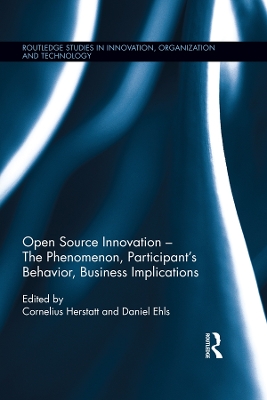Routledge Studies in Innovation, Organizations and Technology
2 total works
Open Source Innovation (OSI) has gained considerable momentum within the last years. Academic and management practice interest grows as more and more end-users consider and even participate in Open Source product development like Linux, Android, or Wikipedia.
Open Source Innovation: Phenomenon, Participant Behaviour, Impact brings together rigorous academic research and business importance in scrutinizing OCI from three perspectives: The Phenomenon, Participants' Behavior, and Business Implications. The first section introduces OCI artefacts, including who is participating and why, and provides a systematic overview of the literature. The second section stresses the behaviour of participants, highlighting participation progression, community selection, user entrepreneurship and fair behaviour, and answering key questions like how to manage governance rules, openness and community design aspects. The third explores the impact and implications of OSI for firms and economies by evaluating business models, uncovering opportunities for firms to interact with communities, and presenting value capture mechanisms.
Open Source Innovation provides a full picture of the movement to help readers understand and engage with OSI from the micro perspective of individuals, to the community, to the macro perspective of firms and economies.
Arguing that licenses are not just an important technology commercialization instrument but are tools critical to generating innovations, the author explains how licenses can in certain situations be employed to help users overcome some of the barriers to user-innovation. User-Innovation: Barriers to Democratization and IP Licensing is a practical guidebook as well as a startlingly original work of scholarship that will be essential reading for years to come.

